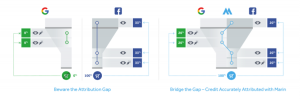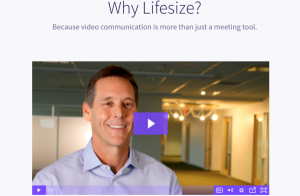There are huge advantages to doing business online. It’s easier than ever before to reach prospects all over the world and systematically work them through your sales funnel.
But operating online also poses unique challenges.
Potential customers can’t just drop by your office and meet you in person. They can’t have a conversation with you, shake your hand, and leave feeling reassured that you’re worthy of their business.
Unlike with brick and mortar businesses, all potential customers have to go on when assessing your credibility online is the information you present to them. Not being able to rely on firsthand observations helps explain why only 52% of web users believe information online is credible.
Many online businesses invest money and countless hours into testing and optimizing individual elements on their website.
Why don’t they convert as many customers as they should? Because they don’t realize the way they’re putting those elements together is damaging their credibility…

Are You Giving Visitors the Right Impression about Your Credibility?
All other things being equal, the website that seems more credible will win more business.
Your website is usually the first point of contact with potential customers. It’s where first impressions are made. Perceived credibility has a huge impact on whether those impressions are positive ones.
Web users are quick to “judge a book by its cover.” If you don’t establish yourself as someone credible enough to do business with right away, you’ll miss out on countless opportunities and customers.
With all the websites out there, there isn’t a reason for people to give you the benefit of the doubt. Most people won’t hunt for signs you’re credible if you don’t make a strong case for yourself seconds after they land on your website.
Identifying and Avoiding Credibility-Killing Mistakes
It’s not like businesses are trying not to be credible. Many simply don’t grasp the connection between what they’re presenting on their websites and how visitors perceive it.
Because you’re intimately familiar with your business and the value you can provide, it’s easy to get “too close” to the situation. Things you understand on a deep level can get lost in translation before reaching your visitors.
One of the most effective ways to boost your credibility online is to understand the most common credibility-killing mistakes. If you can avoid these crucial mistakes – mistakes that occur in a variety of industries – you can position yourself as a credible solution to your prospects’ problems and increase your conversions.
Here are 5 common, but often overlooked, mistakes that destroy businesses’ credibility online:
1. Not Showing Visitors You’re a Real Business
Scammers can set up a decent-looking website and be up and running in a matter of days. It’s hard for users to separate the wheat from the chaff. Because many users have been burned online in the past, they’re understandably skeptical about whom they’ll do business with.
Plenty of businesses offer a great product. But they make the mistake of trying to do business anonymously. They hide behind a corporate logo and impersonal web pages without giving visitors a peek into who they are and what they’re all about.
This type of hands off approach works fine for businesses like Coca Cola and Apple because they’re household names. But for those still establishing themselves, a lack of transparency kills conversions.
How can these businesses distinguish themselves from scammers?
By including personal information to humanize their businesses. Users still want to do business with people they know, like, and trust. Operating online doesn’t change that.
Don’t be afraid to feature information about yourself and your employees. Take photos of your team in your office and display employee bios on your website. It’s also a good idea to include your physical address, a map, and even a registration number from your local chamber of commerce.
Take a look how Zendesk, a customer service platform, shares a brief story about how they got started:
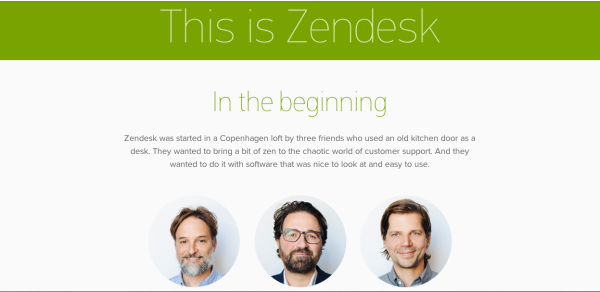
Image source: Zendesk
Give people a glimpse who you are, and they’ll get the assurance that you’re legitimate.
2. Not Paying Enough Attention to Web Design
Judging books by their covers might seem shallow, but that’s exactly what people do. The same goes for your business website.
A study of over 5,500 people from the Stanford Web Credibility Project found that “visual design” was the single most important factor when assessing a website’s credibility.
First impressions about your credibility happen in the matter of seconds. There’s no going back after that. You can have the best product in the world, but if you’re still using an HTML website from 1994, people won’t give you the time of day to find out more.
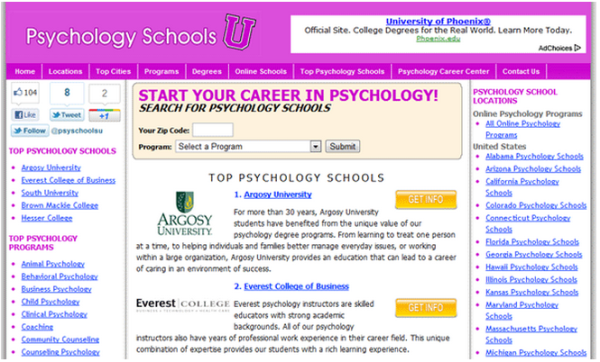
Image credit: Moz
Does the screenshot above give you an impression that website is credible? Absolutely not. It only takes a quick glance to figure it out too.
You don’t have to shell out tens of thousands of dollars for a fancy web designer if your budget is limited. But a little planning and smart investment into your website design can take you a long way when it comes to building your credibility.
There’s no pressure to “get everything right” all at once. Continuously testing design elements – content arrangement, typography, images, navigation menus, and more – and tracking the effect on conversions is an important part of any winning CRO strategy.
3. Giving People the Wrong Impression with Your Business Blog
Online marketing experts are quick to tout the benefits of blogging: organic traffic, better search engine rankings, and becoming a thought leader in your niche.
Those benefits are significant, and there are plenty of great reasons to start a company blog. But failing to use it correctly can give visitors the wrong impression about your credibility.
A lot of businesses start blogs, publish a few posts, and then they lose steam.
This might not seem like a huge deal, but it doesn’t sit well with potential customers. When someone visits a business website and notices the last blog post was six months ago, they could get the idea that: 1) the business is shut down, or 2) the business can’t be trusted to follow through with its commitments.
One of the foundations of credibility is being consistent. A sporadic posting schedule undermines that.
James Clear, an entrepreneur and travel photographer, publishes content every Monday and Thursday. This type of consistency builds credibility and trains readers to look for his posts when those days come around.
You started a blog to generate leads, build credibility, and show prospects you know your stuff. Those things can and will happen – if you commit to a consistent posting schedule.
If you don’t have the resources to commit to blogging regularly, you might be better off focusing on other traffic strategies. At the very least, remove the dates from your blog posts.
4. Making It Too Difficult for Visitors to Get in Touch
A lot of businesses have websites with fancy animations, parallax scrolling, or other web design tricks. But they overlook the most critical part: making it easy for visitors to get in touch with them.
When you’re shopping at a brick and mortar store, all you have to do is find a sales associate. But when you’re working online, boosting your credibility (and conversions) requires a more proactive approach.
If someone can’t figure out how to contact you easily, they could get the wrong idea about your business. After all, what kind of business wouldn’t want people to contact them? Scammers!
Not making your contact information readily available leads to countless missed opportunities. Even if your website creates sparks of interest, those sparks can fizzle out before someone finds your contact information.
You can make it simple for visitors to reach you by featuring your phone number, email address, and physical address prominently on your website. Combining a standard contact form with other communication channels gives users options to reach out in the way that’s most convenient for them.
Check out this homepage from Salesforce:
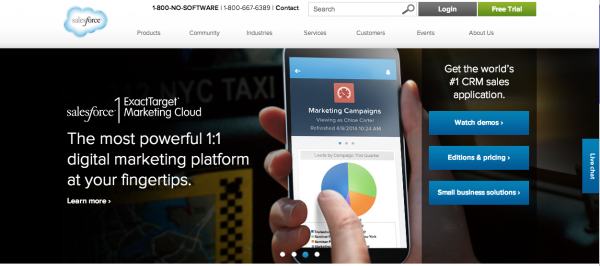
Image credit: Salesforce
Users get the option to call a telephone number, click the link to a contact page, or press the blue live chat button on the right side of the screen.
It’s always a good idea to include a link to your contact page in your navigation menu. This is standard for most business websites, so users have come to expect to find it there.
5. Trying Too Hard to be Credible
Whatever you do, don’t think of a pink elephant…
It’s impossible, right?
This phenomenon – called the ironic process theory – also applies to building your credibility online.
If you get too aggressive assuring visitors you won’t scam them, “scam” quickly becomes the only thought in their minds.
We’ve also seen this happen with email opt-in forms. Privacy policy language assuring visitors they won’t receive spam typically converts less than other alternatives. It doesn’t matter you’re assuring people it won’t happen; the spam connection is already made in their minds.
This is probably the most frustrating credibility mistake because businesses who make it feel like they’re doing all the right things. They’re just doing too much – to the point it sets off alarm bells in visitors’ heads.
B.J. Fogg, director of Stanford’s Persuasive Technology Lab and a leading expert on web credibility, suggests a more moderate approach:
To increase the credibility impact of a website, find what elements your target audience interprets most favorably and make those elements most prominent.
The best way to figure out which elements are most important to your target audience: stop assuming and start testing. Test new elements – testimonials, a professional design, an ironclad guarantee, and so on – one at a time and track your results.
Strike the right balance between making a strong case for yourself and putting people off, and your credibility will speak for itself.
Your Turn
Optimizing your website for credibility puts you on the fast track to optimizing it for conversions.
If you can avoid the mistakes above and present a compelling image the moment visitors land on your website, you can overcome their skepticism and separate yourself from your competitors.
What have you done to boost the credibility of your business website? Which actions have been most effective for you? Leave a comment below and let me know!
Business Articles | Business 2 Community
(650)





